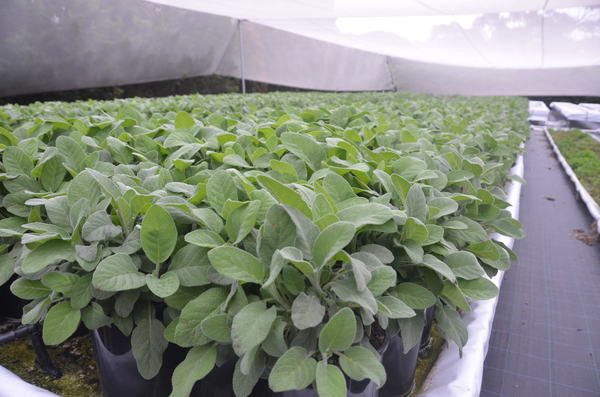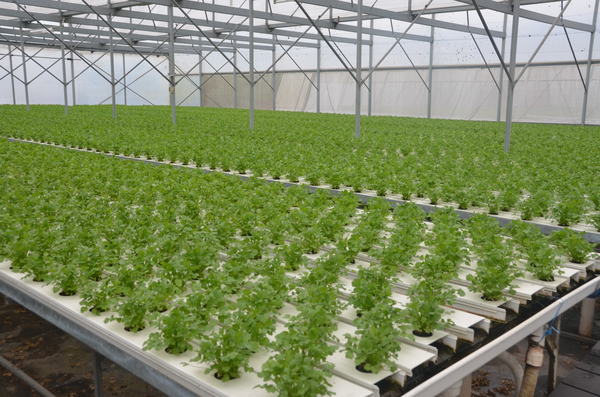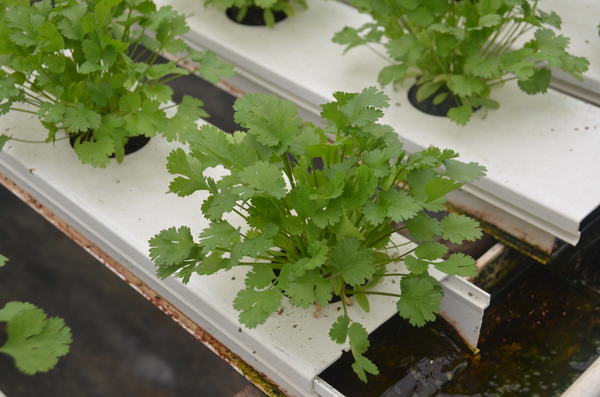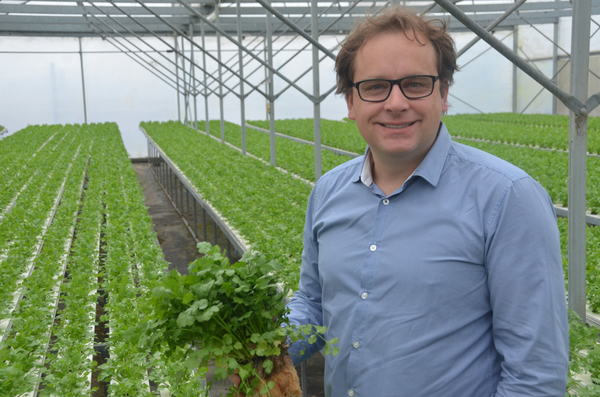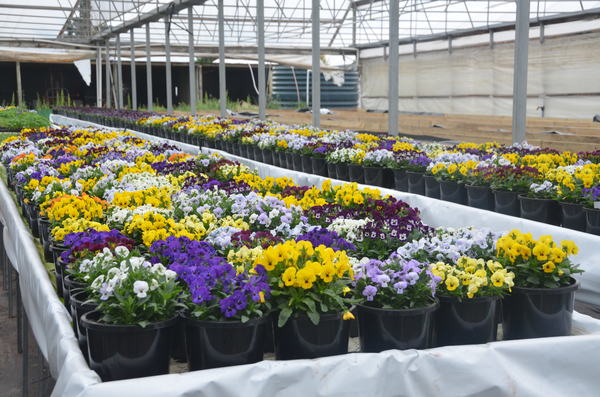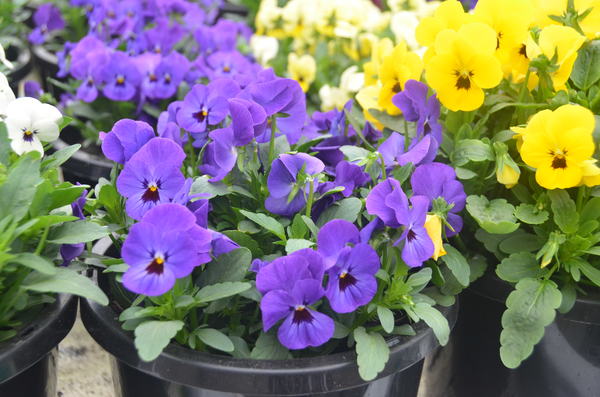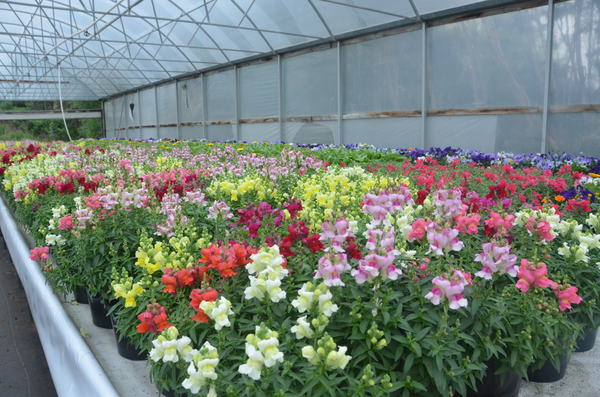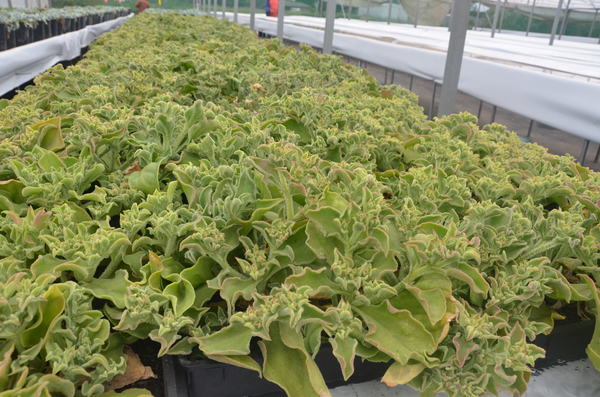Australian Fresh Leaf Herbs is growing in more ways than one. Jan Vydra tells Casey Neill how the Clyde company plans to put its products on plates around the world.
“We’ll never be the salad bowl but I think we can be the deli for the premier markets.”
AUSTRALIAN Fresh Leaf Herbs wants a slice of the Asian revolution.
So through multi-million investment, managing director Jan Vydra is increasing efficiency, adding an Aboriginal native food walk, inviting chefs to trial new varieties on-site in a shipping container kitchen, and introducing a Salad Door – his take on a wine tasting space.
He started the business with William Pham in Clyde in 2008.
“It wasn’t a planned approach. He was here and he had two greenhouses and he was just plodding around, didn’t really have any big markets,” he said.
“I brought the markets and the corporate strategy, really. He just wanted to grow the plants.
“William actually came from a banking background but his father used to grow hydroponic tomatoes in Adelaide.
“He’d just had enough of the corporate lifestyle.
“I was running Yarra Valley Farms, which was a distributor of fruit and vegetables.
“I started to get a lot of complaints about fresh herbs.
“Slowly I learnt that herbs were really important to chefs because all the products really differentiate their plates and give their customers an experience.
“At that point I said ‘this is a really important market’.”
It was at a time when MasterChef was capturing viewers’ imaginations.
“I had a hospitality focus to start with but I switched to retail very quickly because those food competition programs just took off,” he said.
“There’s really been a revolution in the cooking culture in Australia.
“Our business rode that wave back in 2008 when we started growing 2000 bunches of basil.
“Today we probably grow 120,000 to 130,000 bunches a week.”
Fresh Leaf started with one variety.
“Today we have over 70 or 80 different varieties of products ranging from fresh herbs to Australian natives, edible flowers to micro cresses,” Jan said.
The herb range includes basil, chives, coriander, continental and curly parsley, mint, dill tarragon, marjoram, oregano, sage, thyme, rosemary and Thai basil.
Edible flowers range from viola to cornflower, geranium, rose petals, calendula, marigold, pansy and snap dragon.
Fresh Leaf also grows shoots and sprouts – snow pea, bean, broccoli, popcorn, red lentils and alfalfa.
Microgreens include basils, carrot, celery, chard, chervil, chives, coriander, dandelion, dill, lemon balm, mint, mustard, curly parsley, red radish, red cabbage, red garnet, rocket, rockmelon, shiso, tatsoi, red vein sorrel and watercress.
Fresh Leaf employs about 65 people and today sells about 4.5 million bunches and punnets – up from 2 million in 2010 and on its way to 6.3 million by 2019, if all goes according to plan.
“We want export to be the biggest part of our business,” Jan said.
“At the same time, we’re focusing on establishing those relationships with major retailers and also chefs around Australia.
“But we’ve got 23 million people in Australia.
“Realistically we’re touching 70 per cent of the nation, which is 16 or 17 million people.
“Going into Asia, we suddenly have half a billion people that we can access, that are changing their habits and becoming more Westernised and looking for Western products.
“We haven’t really cracked into China yet, but I can see that wave is sweeping through Asia that people want to buy Australian products.
“I think Australia has a great opportunity if we can harness part of the Asian revolution.
“We’ll never be the salad bowl but I think we can be the deli for the premier markets.”
And Fresh Leaf is introducing new technology so it can play its part.
“We tried growing basil outdoors and we did relatively OK at it but we found that there was some inconsistency in controlling the crop,” he said.
“We started growing more and more hydroponic produce which gave us pretty close to year-round production.
“It gave us the consistency in quality.”
The environment also benefited.
“Over the last three years growing hydroponically, we’ve saved just under half a billion litres of water compared to conventional farming,” he said.
“This space over here grows about 10,000 bunches of basil a week.
“I think it’s about 12,000 square metres, off the top of my head.
“You would need 10 times that space to grow outdoors and you would use 10 times the amount of water.
“Even though it’s really efficient, it’s still 52 per cent inefficient because of all the walkways.
“The new technology that we’ve got will actually condense that area further.
“We’ve got a shuttle system that lets us push all the things around.
“We’ll have 35 per cent more production per square metre.”
On 23 November, Coles announced a $430,000 interest-free loan for Fresh Leaf to build a state-of-the-art hydroponic greenhouse and invest in sustainable farming methods.
The Coles Nurture Fund cash will enable a 500 per cent increase in unit productivity when the greenhouse is finished next March.
It will feature Dutch-designed rolling benches that use 85 per cent of available space, compared to grow-beds which only use 60 per cent.
Waste-oil heaters will regulate the greenhouse temperature, allowing increased production throughout the year.
Fresh Leaf in September received the Coles Rising Star Award.
“The farming industry needs to invest in sustainable farming methods like this and we also hope that the use of popular technology will attract more young people to join the industry,” Jan said.
Vertical farming is the next frontier.
“We’ve got a new system that’s currently being patented and will be launched in February,” he said.
“It’s going to give us eight times the production per square metre.”
Jan will learn about vertical farming from the world’s best when he visits Ireland in February, thanks to a Nuffield Australia Farming Scholarship and $30,000 from the William Buckland Foundation.
He’ll study innovative ways to boost yields and sustainability of fresh herb and salad leaf production.
After Ireland, he’ll head to Iceland to learn more about harnessing geothermal heat.
This research will shape a new purpose-built facility, which Jan plans to build in two to three years.
For now, it will help to transform the flower-growing house in Devon Meadows that Fresh Leaf acquired about three years ago.
The Flowerdale Farm had supplied micro greens and edible flowers for about 30 years.
It will soon be home to one of the most expensive greenhouses in Australia.
It also now has four greenhouses dedicated to Australian natives and edible succulents, including kolcurra, ice plant, seaspray, borage and oyster leaf – which true to its name, tastes like oyster.
Jan said the plant was traditionally grown in the Scottish highlands and that Fresh Leaf was the only Australian grower.
“Sometimes our products are very new so getting that cut-through for them to adopt them, especially retailers…” he said.
“It trickles down. New products are really popular with chefs because they’re looking for it, they’re creative.
“Then consumers come in.
“I think we’ve got a pretty big journey in front of us.”

